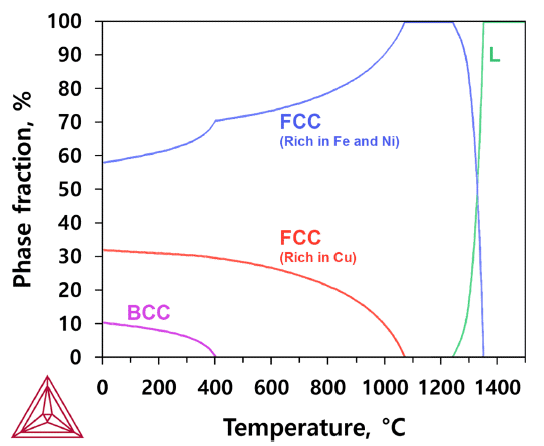- [English]
- Fabrication of FeCuNi alloy by mechanical alloying followed by consolidation using high-pressure torsion
-
Peyman Asghari-Rad, Yongju Kim, Nhung Thi-Cam Nguyen, Hyoung Seop Kim
-
J Korean Powder Metall Inst. 2020;27(1):1-7. Published online February 1, 2020
-
DOI: https://doi.org/10.4150/KPMI.2020.27.1.1
-
-
1,105
View
-
4
Download
-
1
Citations
-
 Abstract Abstract
 PDF PDF
In this research, a new medium-entropy alloy with an equiatomic composition of FeCuNi was designed using a phase diagram (CALPHAD) technique. The FeCuNi MEA was produced from pure iron, copper, and nickel powders through mechanical alloying. The alloy powders were consolidated via a high-pressure torsion process to obtain a rigid bulk specimen. Subsequently, annealing treatment at different conditions was conducted on the four turn HPT-processed specimen. The microstructural analysis indicates that an ultrafine-grained microstructure is achieved after post-HPT annealing, and microstructural evolutions at various stages of processing were consistent with the thermodynamic calculations. The results indicate that the post-HPT-annealed microstructure consists of a dual-phase structure with two FCC phases: one rich in Cu and the other rich in Fe and Ni. The kernel average misorientation value decreases with the increase in the annealing time and temperature, indicating the recovery of HPT-induced dislocations. -
Citations
Citations to this article as recorded by  - Effects of nickel content and annealing temperature on the magnetic characteristics of nanostructured FeCu alloys
Abderrahmane Younes
Journal of Materials Science: Materials in Electronics.2024;[Epub] CrossRef
|

